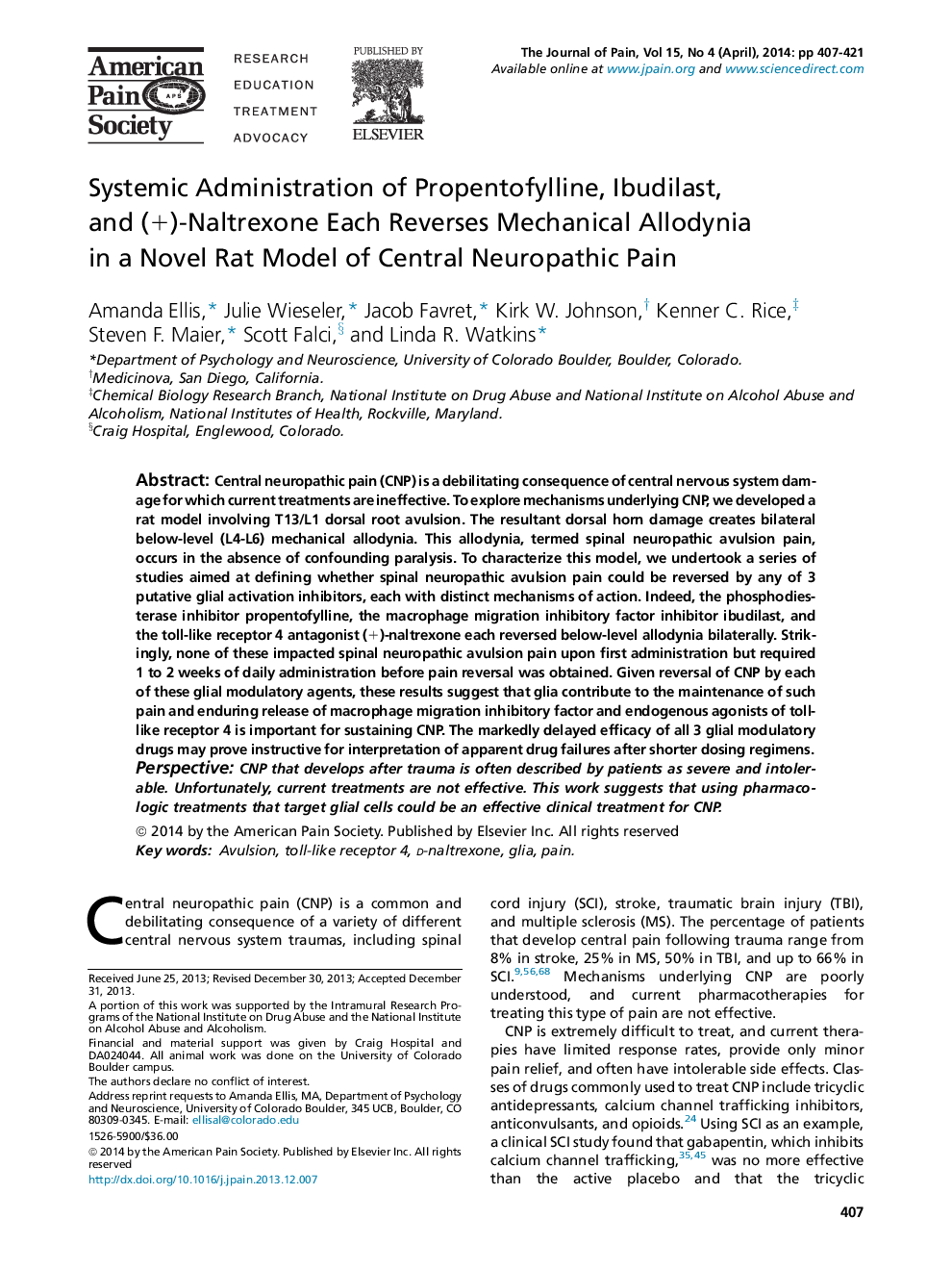| Article ID | Journal | Published Year | Pages | File Type |
|---|---|---|---|---|
| 2722999 | The Journal of Pain | 2014 | 15 Pages |
Central neuropathic pain (CNP) is a debilitating consequence of central nervous system damage for which current treatments are ineffective. To explore mechanisms underlying CNP, we developed a rat model involving T13/L1 dorsal root avulsion. The resultant dorsal horn damage creates bilateral below-level (L4-L6) mechanical allodynia. This allodynia, termed spinal neuropathic avulsion pain, occurs in the absence of confounding paralysis. To characterize this model, we undertook a series of studies aimed at defining whether spinal neuropathic avulsion pain could be reversed by any of 3 putative glial activation inhibitors, each with distinct mechanisms of action. Indeed, the phosphodiesterase inhibitor propentofylline, the macrophage migration inhibitory factor inhibitor ibudilast, and the toll-like receptor 4 antagonist (+)-naltrexone each reversed below-level allodynia bilaterally. Strikingly, none of these impacted spinal neuropathic avulsion pain upon first administration but required 1 to 2 weeks of daily administration before pain reversal was obtained. Given reversal of CNP by each of these glial modulatory agents, these results suggest that glia contribute to the maintenance of such pain and enduring release of macrophage migration inhibitory factor and endogenous agonists of toll-like receptor 4 is important for sustaining CNP. The markedly delayed efficacy of all 3 glial modulatory drugs may prove instructive for interpretation of apparent drug failures after shorter dosing regimens.PerspectiveCNP that develops after trauma is often described by patients as severe and intolerable. Unfortunately, current treatments are not effective. This work suggests that using pharmacologic treatments that target glial cells could be an effective clinical treatment for CNP.
